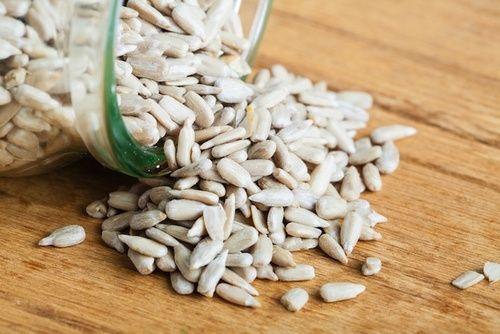I safflower seeds, rich in vitamins C and K, are very useful for i cardiovascular disorders and for arteriosclerosis. Let's find out better.
> The main nutrients of safflower seeds
> The properties
> Safflower seeds in the kitchen

Main nutrients of safflower seeds
Il safflower (Carthamus tinctorius), also known as safferanone, is a plant grown in hot countries from which a precious vegetable oil but also one coloring substance for food, textiles and cosmetics, the cartamine, with an aroma reminiscent of the saffron.
Traditionally, the cassocks of Buddhist monks are still dyed today with saffron flowers.
About the 45% of safflower seeds is composed of grassi, 20% da protein and 33% da fibers.
The oil extracted from these seeds is very rich in linoleic acid (omega 6) and has an imported percentage of oleic acid compared to other vegetable oils. It is also a valuable source of vitamins C and K..
The cultivation of safflower is aimed at oil production.
there different varieties of safflower, selected over time also based on the needs of the reference market: those that produce oil with the greatest amount of oleic acid are destined for the food industry, for resistance to high temperatures and rancidity, while safflower which produces oil with higher quantities of linoleic acid it is destined for the paint industry, due to its drying properties.
You can learn more about the benefits of vitamin K and the foods that contain it

Property
The oil of safflower seeds it is rich in polyunsaturated fats which hold "bad" cholesterol levels under control (LDL) in the blood and are useful in the prevention of cardiovascular disorders e arteriosclerosis.
Safflower oil is used to produce vitaminized vegetable margarines e natural supplements for those suffering from vitamin deficiencies.
Among the beneficial actions of this oil there seems to be also the adjuvant effect in weight loss and folk medicine attributes great properties to it: it strengthens thephysical and mental activity and helps thesexual activity.
Already in the Middle Ages it was used against asthma, cough e Psoriasis, For laxative properties and the infusions of safflower seeds were used to restore strength and health to Older people (this custom is still practiced today in India and Africa).
The high vitamin K content gives safflower seeds acoagulating action e antitumor, as well as making them valuable allies in the prevention ofOsteoporosis.
Other uses of safflower oil are industrial ones, mainly for the production of make-up and for the composition of colors and paints.
In painting the oil of safflower seeds it is used to thin the colors and slow down the drying process and thanks to its resistance to light, it does not yellow over time, therefore perfect for very light and pastel shades.
Safflower seeds in the kitchen
Safflower is often used as saffron substitute; cheaper than the first, it has a much more intense color but a more delicate flavor.
Thanks to an enzyme, safflower contributes to making milk thicker, which is why it is perfect for giving consistency in creams and puddings.
Un infusion of safflower, useful in case of asthma or cough, can be prepared by putting 2 grams of safflower seeds in a cup of boiling water for a few minutes, filter the drink and add a teaspoon of honey.


























